Potrebujeme váš súhlas na využitie jednotlivých dát, aby sa vám okrem iného mohli ukazovať informácie týkajúce sa vašich záujmov. Súhlas udelíte kliknutím na tlačidlo „OK“.
ASTM F2978-13
Guide to Optimize Scan Sequences for Clinical Diagnostic Evaluation of Metal-on-Metal Hip Arthroplasty Devices using Magnetic Resonance Imaging
Automaticky preložený názov:
Sprievodca pre optimalizáciu snímanie sekvencie pre klinické diagnostike Metal-on-Metal bedrového kĺbu zariadenia pomocou magnetickej rezonancie
NORMA vydaná dňa 1.12.2013
Informácie o norme:
Označenie normy: ASTM F2978-13
Poznámka: NEPLATNÁ
Dátum vydania normy: 1.12.2013
Kód tovaru: NS-54809
Počet strán: 9
Približná hmotnosť: 27 g (0.06 libier)
Krajina: Americká technická norma
Kategória: Technické normy ASTM
Kategórie - podobné normy:
Anotácia textu normy ASTM F2978-13 :
Keywords:
orthopedic device, magnetic resonance imaging, metal-on-metal hip prosthesis, metal-on-metal total hip arthroplasty, modular acetabular system, MRI, musculoskeletal joint replacement, ICS Number Code 11.040.40 (Implants for surgery, prothetics and orthotics)
Doplňujúce informácie
| Significance and Use | ||||||
|
5.1 Magnetic resonance imaging is ideally suited to image MOM hip arthroplasty due to its superior soft tissue contrast, multiplanar capabilities and lack of ionizing radiation. MR imaging is the most accurate imaging modality for the assessment of peri-prosthetic osteolysis and wear-induced synovitis (17-19). 5.2 Before scanning a patient with a specific implant, the MR practitioner shall confirm that the device is MR Conditional and that the scan protocol to be used satisfies the conditions for safe scanning for the specific implant. 5.3 This guide can be used to identify the following adverse events. 5.3.1 Osteolysis—Magnetic resonance imaging is superior to conventional radiographs and CT in the assessment of peri-prosthetic osteolysis and has been shown to be the most accurate method to locate and quantify the extent of peri-prosthetic osteolysis (17, 18). On MR imaging, osteolysis appears as well marginated intraosseous intermediate to slightly increased signal intensity lesions that contrast with the high signal intensity of the intramedullary fat. A characteristic line of low signal intensity surrounds the area of focal marrow replacement, distinguishing the appearance of osteolysis from tumoral replacement of bone or infection (20). 5.3.2 Component Loosening—While the data are preliminary, MR imaging can identify circumferential bone resorption that may indicate component loosening. Loosening may result from osteolysis, circumferential fibrous membrane formation or poor osseous integration of a non-cemented component. On MR imaging, component loosening typically manifests as circumferential increased signal intensity at the metallic-bone or cement-bone interface on fat-suppressed techniques (19). The finding of circumferential fibrous membrane formation or osteolysis also indicates potential loosening; this is in contrast to a well-fixed component, with high signal intensity fatty marrow directly opposed to the implant interface. 5.3.3 Wear-Induced Synovitis—Magnetic resonance imaging is the most useful imaging modality to assess the intracapsular burden of wear-induced synovitis surrounding MOM arthroplasty (21). Preliminary data indicate that the signal characteristics of the synovial response on MR imaging correlate with the type of wear-induced synovitis demonstrated on histology at revision surgery (22). Low signal intensity debris is suggestive of metallic debris on histology. Mixed intermediate and low signal debris correlates with the presence of mixed polymeric (polyethylene and/or polymethyl methacrylate) and metallic debris at histology. Magnetic resonance imaging can demonstrate decompression of synovitis or fluid into adjacent bursae, such as the iliopsoas or trochanteric bursa, which can present as soft tissue masses or with secondary nerve compression. On occasion, wear-induced synovitis can result in a chronic indolent pattern of erosion of the surrounding bone, even in the absence of focal osteolytic lesions (6). 5.3.4 Infection—In the setting of infection, the synovium often demonstrates a hyperintense, lamellated appearance with adjacent extracapsular soft tissue edema. These appearances help to distinguish the synovial pattern of infection from wear-induced synovitis, although aspiration is still required for definitive diagnosis (14). The presence of a soft tissue collection, draining sinus or osteomyelitis further supports the diagnosis of infection on MR imaging. 5.3.5 Adverse Local Tissue Response—Adverse local tissue reactions can manifest as synovitis, bursitis, osteolysis and cystic or solid masses adjacent to the arthroplasty, which may be termed pseudotumors (17-19). ALTR can also include the histopathologic feature of aseptic lymphocytic vasculitis-associated lesions (ALVAL), which can be confirmed using histology. A relatively common appearance of joints with ALVAL is expansion of the pseudocapsule with homogenous high signal fluid interspersed with intermediate signal intensity foci. More recent studies suggest that maximum synovial thickness and the presence of more solid synovial deposits highly correlate with tissue damage at revision surgery and necrosis at histologic inspection (12). |
||||||
| 1. Scope | ||||||
|
1.1 This guide describes the recommended protocol for magnetic resonance imaging (MRI) studies of patients implanted with metal-on-metal (MOM) devices to determine if the periprosthetic tissues are likely to be associated with an adverse local tissue reaction (ALTR). Before scanning a patient with a specific implant, the MR practitioner shall confirm that the device is MR Conditional and that the scan protocol to be used satisfies the conditions for safe scanning for the specific implant. This guide assumes that the MRI protocol will be applied to MOM devices while they are implanted inside the body. It is also expected that standardized MRI safety measures will be followed during the performance of this scan protocol. 1.2 This guide covers the clinical evaluation of the tissues surrounding MOM hip replacement devices in patients using MRI. This guide is applicable to both total and resurfacing MOM hip systems. 1.3 The protocol contained in this guide applies to whole body magnetic resonance equipment, as defined in section 2.2.103 of IEC 60601-2-33, Ed. 3.0, with a whole body radiofrequency (RF) transmit coil as defined in section 2.2.100. The RF coil should have quadrature excitation. 1.4 The values stated in SI units are to be regarded as standard. 1.5 This standard does not purport to address all of the safety concerns, if any, associated with its use. It is the responsibility of the user of this standard to establish appropriate safety and health practices and determine the applicability of regulatory limitations prior to use. The user may consider all precautions and warnings provided in the MR system and hip implant labeling prior to determining the applicability of these protocols. |
||||||
| 2. Referenced Documents | ||||||
|
Podobné normy:
Historická
1.2.2009
Historická
1.2.2013
Historická
1.3.2006
Historická
1.2.2009
Historická
1.3.2006
Historická
15.6.2009


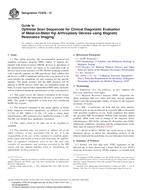
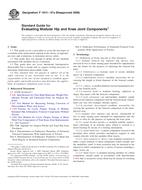 ASTM F1814-97a(2009)..
ASTM F1814-97a(2009)..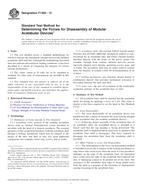 ASTM F1820-13
ASTM F1820-13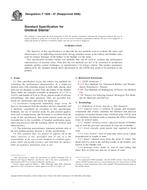 ASTM F1828-97(2006)..
ASTM F1828-97(2006)..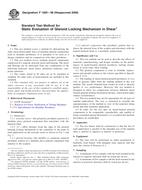 ASTM F1829-98(2009)..
ASTM F1829-98(2009)..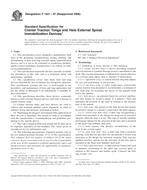 ASTM F1831-97(2006)..
ASTM F1831-97(2006)..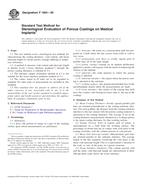 ASTM F1854-09
ASTM F1854-09
 Cookies
Cookies
